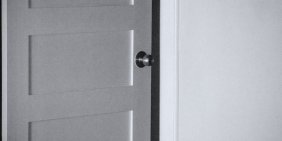
From Aotearoa to Arup: New Zealand’s health and safety governance guide goes global

What connects Arup’s boardrooms and New Zealand’s directors? A shared toolkit for governing health and safety well.
In a telling example of how thoughtful guidance can ripple well beyond its origin, a New Zealand-developed framework for health and safety governance has found new life within the corridors of a global engineering and design consultancy.
Arup, a company known for shaping iconic structures from the Sydney Opera House to Crossrail in the UK, has turned to the Institute of Directors New Zealand’s Health and Safety Governance: A Good Practice Guide to inform and inspire its own executive conversations.
This quiet, cross-continental endorsement speaks volumes about the guide’s clarity, utility and growing international credibility. It also reflects a rising global awareness of the importance of health and safety (H&S) not just as compliance, but as a fundamental dimension of good governance.
A global firm in search of wisdom
The journey began with a simple but persistent question: what does good health and safety governance look like for directors and senior leaders? When Arup’s H&S leadership team began searching for guidance, the literature proved surprisingly thin.
“There is limited guidance provided to senior leaders on the governance of health and safety,” one executive explained. “We conducted an extensive online search, reviewing leadership and governance materials from regulatory bodies and forums. That’s how we found the IoD New Zealand guide.”
That discovery marked a turning point. Amid a sea of either overly technical documentation or vague philosophical treatises, the New Zealand guide stood out for its practical orientation.
“It’s written for the right audience,” Arup’s executive said. “The three tools in particular are very practical and we saw an immediate opportunity to use them.”
Practical tools, not theoretical talk
Published by the IoD New Zealand in partnership with WorkSafe and the Business Leaders’ Health and Safety Forum, the guide provides a governance lens for understanding health and safety risk, accountability and board oversight.
It introduces three pragmatic tools – maturity assessment, due diligence expectations and board agenda planning – designed to help boards fulfil their obligations and lead with confidence.
These tools were precisely what Arup was looking for. The guide’s framing does not treat H&S as an isolated or purely operational matter; it positions it as a core governance responsibility that needs boardroom fluency. This perspective resonated with a company whose directors and executives are dispersed across markets and sectors, but united in their duty of care.
From pilot to practice
Arup has begun piloting the guide’s tools within its global operations. “We’ve started to pilot it, especially the three tools,” the executive said. “Following the pilot, we expect to use it as the basis for a workshop for our executive leaders, focused specifically on the governance of health and safety.”
This is not a mere photocopy job. Arup has rebranded and reformatted the guide into its own house style – a testament to its intention to embed the content deeply within internal systems. While the core content remains intact, some customisation is inevitable.
“We may reduce the length of the main guide following feedback from the pilot,” the executive said, suggesting that brevity and clarity remain as important to Arup as to the IoD.
Credibility earned
Arup’s interest in a New Zealand resource reflects not only the guide’s quality, but the maturity of New Zealand’s governance ecosystem.
For directors within Aotearoa, this is a reminder that our local frameworks can – and do –stand up on the world stage. It also offers a challenge: to continue producing material that is rooted in New Zealand’s regulatory and cultural context, and capable of transcending it.
This guide’s cross-border uptake also aligns with a growing shift in how global companies are approaching H&S. The post-Covid corporate world is more conscious than ever of psychological safety, executive accountability and stakeholder expectations around workforce wellbeing. In this climate, tools that help boards make sense of complexity, without losing sight of their fundamental governance role, are in high demand.
A model worth emulating
For IoD members, Arup’s example reinforces the value of applying this guide locally – and perhaps more ambitiously, of championing its use within multinational settings where New Zealand directors sit at the board table.
As boards look to reframe their approach to health and safety as a strategic and cultural priority, not just a compliance task, the guide offers a starting point grounded in real-world governance.
And if it’s good enough for Arup, perhaps it’s good enough for the rest of us, too.
Visit Health and Safety Governance: A Good Practice Guide to follow Arup’s example.
Arup has kindly recognised the value of this guide and, in support of its use, is making a donation to a scholarship fund for health and safety governance training. Details will be announced shortly.


